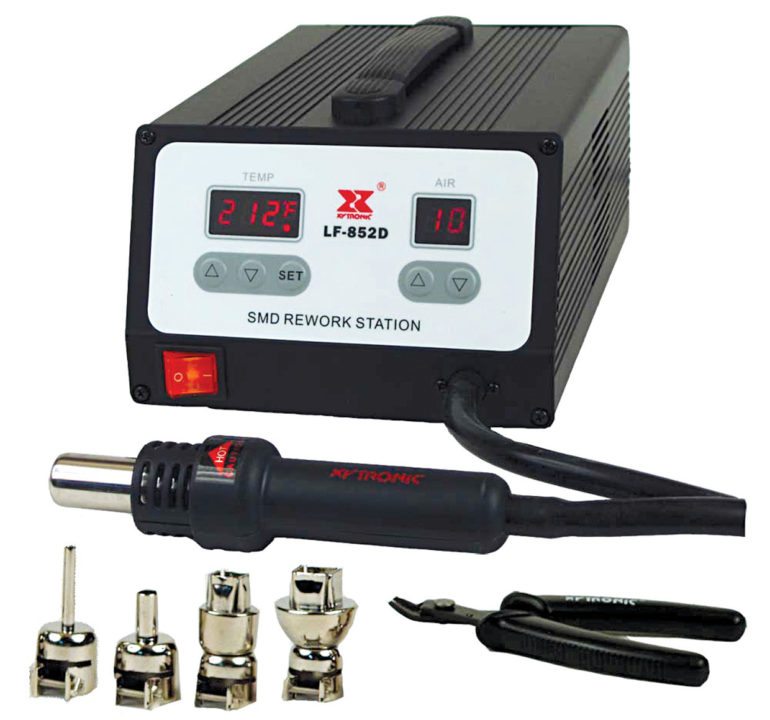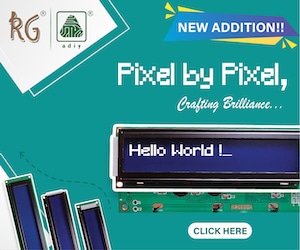Soldering irons are most often used for installation, repairs and limited production work in electronics assembly. These can be commonly seen in any electronics environment. But with the confluence of automation and the emergence of surface-mount technology (SMT), more sophisticated methods of assembly and repair have came to the fore, and demand refinement in both soldering and de-soldering techniques. Thus, first-age soldering workstation have taken the place of ordinary soldering irons in repair shops.
A soldering workstation is a simple temperature-controlled instrument that consists of electrical power supply, control circuitry, soldering iron or soldering head with a tip-temperature sensor and/or provision for adjustment of temperature, and display. The station usually has a stand for the hot iron when not in use, and a wet sponge for cleaning. It is invariably used for soldering components.
Other functions may be combined; for example, a de-soldering pump, mainly for the removal of through-hole components. In addition, there may be a hot-air gun, vacuum pickup tool and soldering head. But when you repair a modern-age motherboard, for example, to replace a damaged electrolytic capacitor, after struggling with your 30W soldering workstation that came with a spring-loaded vacuum tool, you simply feel hapless and realise what a difference the right power and tool make!
Usually purchasing such a soldering workstation for your workshop ends up in a folly as the array of features and manufacturers’ specifications are usually quite confusing, and most units are priced out of your budget. A soldering or de-soldering station is an investment, and the decision to purchase one (or a few) should be made thoughtfully. With the variety of soldering stations out there, make sure you are getting the right one for your money.
You must carefully select the soldering and de-soldering station as per your requirement as different types of components require different parameters for soldering/de-soldering. If you do not look out for these, you might end up damaging the equipment. This buyer’s guide is all about this.
Hot-air rework
Hot-air rework stations are ideal for small jobs that you need to finish in a single go. A hot-air gun, which melts the solder and enables you to remove the components, is great for removing parts from an old circuit board. But the process is not fully surgical, though it will save you a great deal of time as well as existing parts that otherwise would have been damaged along with the circuit board.

Another benefit of using a rework station is that it doubles up as a soldering workstation, which isto say that you de-solder, say, a transistor and then solder on a new transistor immediately, saving you time in the process.
You can de-solder and re-solder several components simultaneously—quickly de-solder a problematic electrical part from the circuit board and re-solder the area again in a few minutes. In addition, hot-air stations are typically non-contact, enabling you to prevent damage to other parts of the circuit as you work.
However, one drawback of using hot-air rework stations is that these are much more expensive than de-soldering stations. Rework stations are also considerably bulky and difficult to carry around, so you will need to bring your work to the station itself, which can be difficult at times.










